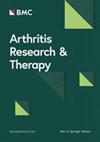The conditions that patients with systemic lupus erythematosus should fulfill before pregnancy to optimize outcomes: a large-scale multicenter cohort study from China
IF 4.9
2区 医学
Q1 Medicine
引用次数: 0
Abstract
Systemic lupus erythematosus (SLE) is frequently associated with a lower rate of live birth and a higher incidence of adverse pregnancy outcomes (APOs), and pregnancy can also increase the risk of SLE flares. Comprehensive preconception assessment is critical for improved pregnancy outcomes in patients with SLE. Unfortunately, no global consensus on the conditions that patients with SLE should fulfill prior to pregnancy has yet been formed. This study aimed to investigate the conditions that patients with SLE should fulfill before pregnancy to optimize outcomes. This was a retrospective study utilizing data from a multicenter Chinese SLE cohort. Information on demographics, obstetric history, SLE activity, clinical manifestations, autoantibody profiles, laboratory parameters, therapeutics, and pregnancy outcomes was collected. Logistic regression was used to explore the optimal conditions. The study comprised 347 singleton pregnancies from 332 patients with SLE in total, with a mean maternal age at conception of 30.3 (SD 4.0) years. The analysis revealed that patients who were stable for at least 6 months, had no active vital organ involvement, were on nonfluorinated corticosteroids no more than the dose equivalent to prednisone 7.5 mg per day, and were on hydroxychloroquine displayed a significantly higher incidence of live birth (86.1% vs. 73.7%, p = 0.004) and a markedly decreased risk of APOs (29.4% vs. 52.1%, p < 0.001). Additionally, flares occurred less frequently during pregnancy (14.7% vs. 27.3%, p = 0.009), particularly for severe flares (5.8% vs. 14.8%, p = 0.011). This study delineated the conditions that patients with SLE should fulfill before pregnancy, which provides better instructions for clinical practice.求助全文
约1分钟内获得全文
求助全文
来源期刊

Arthritis Research & Therapy
RHEUMATOLOGY-
CiteScore
8.60
自引率
2.00%
发文量
261
审稿时长
14 weeks
期刊介绍:
Established in 1999, Arthritis Research and Therapy is an international, open access, peer-reviewed journal, publishing original articles in the area of musculoskeletal research and therapy as well as, reviews, commentaries and reports. A major focus of the journal is on the immunologic processes leading to inflammation, damage and repair as they relate to autoimmune rheumatic and musculoskeletal conditions, and which inform the translation of this knowledge into advances in clinical care. Original basic, translational and clinical research is considered for publication along with results of early and late phase therapeutic trials, especially as they pertain to the underpinning science that informs clinical observations in interventional studies.
 求助内容:
求助内容: 应助结果提醒方式:
应助结果提醒方式:


